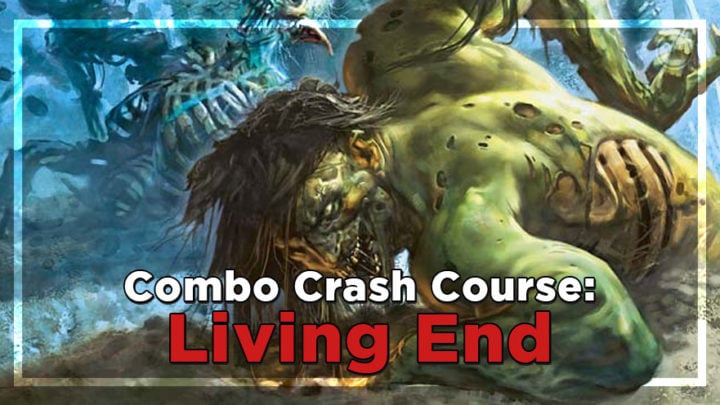Thanks for joining me for another Combo Crash Course, where we explain Magic’s most notorious combo decks. If you’ve always wanted to know more about legendary decks like Splinter Twin, but didn’t know where to ask, this is the place to be.
Today’s subject is a decidedly modern example of graveyard combo. Not only because this deck has been part of the Modern format since day one, but because of how eagerly its adherents have incorporated new cards and mechanics. A game plan revolving around a pile of draft chaff uncommons, and one literally uncastable rare…
WHAT IS LIVING END
Living End (the deck) is 100% dedicated to getting Living End (the card) on the stack with as much consistency and impact as possible. This is best understood as a two-step process: Step one is loading up your graveyard with a lethal amount of creatures very quickly; step two is circumventing the suspend clause to cast Living End directly, using one of a few special interactions.
When Living End does resolve, it essentially swaps all creatures in play with those in graveyards. If you do this soon enough, and without killing any of your opponents’ creatures, you will typically end up with a huge board capable of lethal combat damage on your next turn — or even that same turn, if your creatures have haste!
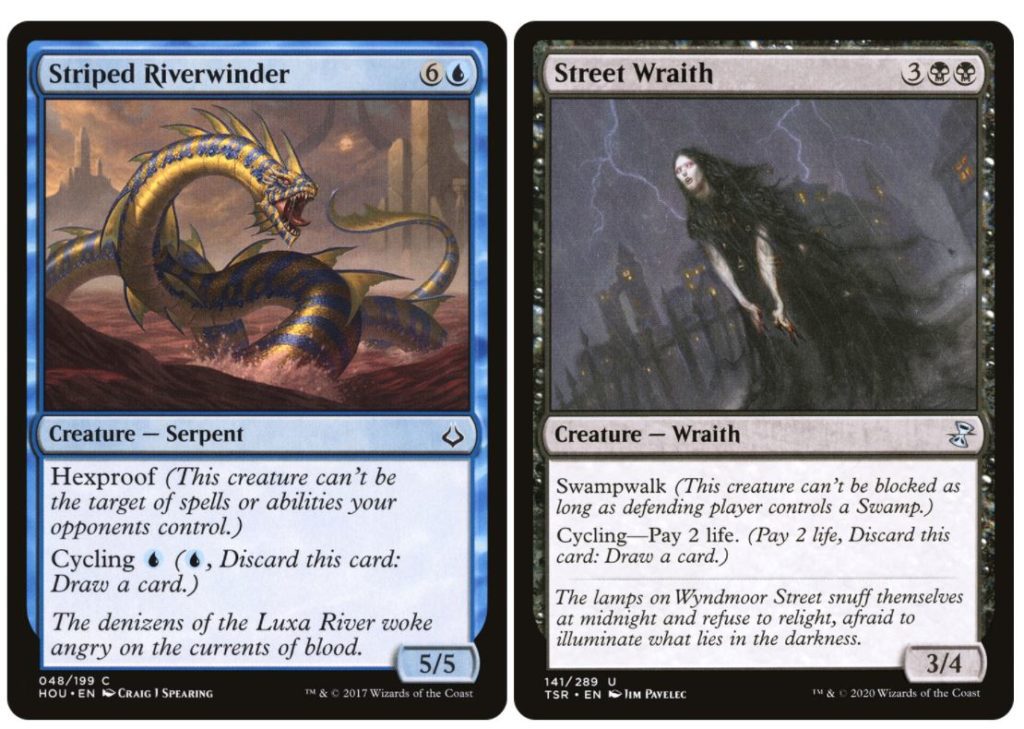
It’s a cool and explosive way to win games, and it has remained surprisingly resilient over time. The deck has changed its approach and even colors over the years as new options become available — but only gradually. The reason Living End plays so many odd cards is because every slot in the 75 has to fit into its delicate all-in combo plan.
A+B VS. ALL-IN COMBO
With Splinter Twin, we looked at the archetypal “A+B” combo strategy. These decks only need two cards in play together to win from almost any position, so you can dedicate the rest of your deck to interaction and card draw. “A” and “B” could be anything: Deceiver Exarch and Splinter Twin, Platinum Emperion and Madcap Experiment, Emrakul and Through the Breach, or even just for Blood Moon and Magus of the Moon. Regardless of which cards you use, the deck would pretty much play the same way: finding your win conditions and protecting them at all costs.
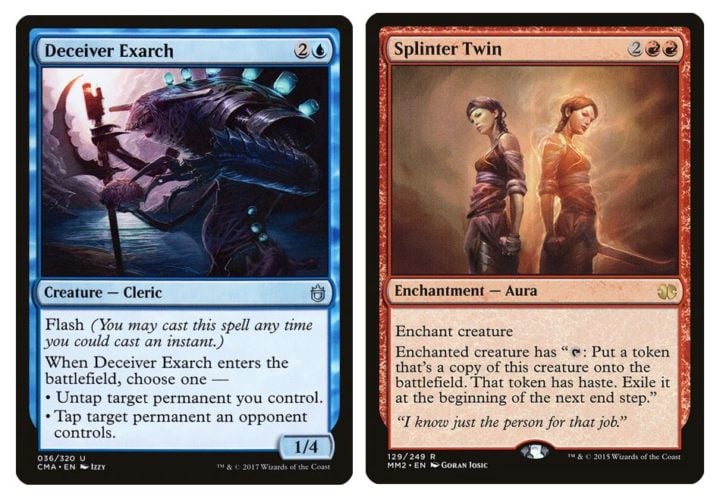
Living End is another kind of combo deck, what we call an “all-in” strategy. When a combo requires a little more setup, the need for consistency can warp the entire decklist. All-in combo decks have to choose cards which tick the boxes for the combo first, then add removal, card draw and ramp spells that fit their game plan.
In more extreme cases, the combo will impose a hard limitation on which spells can be included; Living End is one such case. No spell in the deck can have a printed mana value lower than three, besides the namesake card itself, or the entire deck will cease to function. The reason why? Cascade.
THE DIFFERENCE BETWEEN “NO COST” AND “ZERO COST”
The card Living End comes from a select subset of Magic cards that have no printed mana cost. This does not mean you can cast them for free, as with cards like Ornithopter or Black Lotus which cost 0. Having no mana cost means you can’t cast these cards normally at all!
Instead, all 13 of these spells offer some alternative means to cast them in their rules text, usually via suspend. In return for these restrictions, their effects mimic some of the most impactful spells in Magic history: Ancestral Recall, Balance, Replenish, Wheel of Fortune, Eureka, Bribery — and yes, Living Death.
Not long after the first suspend-only spells were printed in Future Sight, Alara Reborn gave us the cascade mechanic. The exact wording of cascade (and a few similar abilities) allows you to “freecast” these spells without paying their mana cost, neatly sidestepping the “nonexistent mana costs can’t be paid” part of their rules.
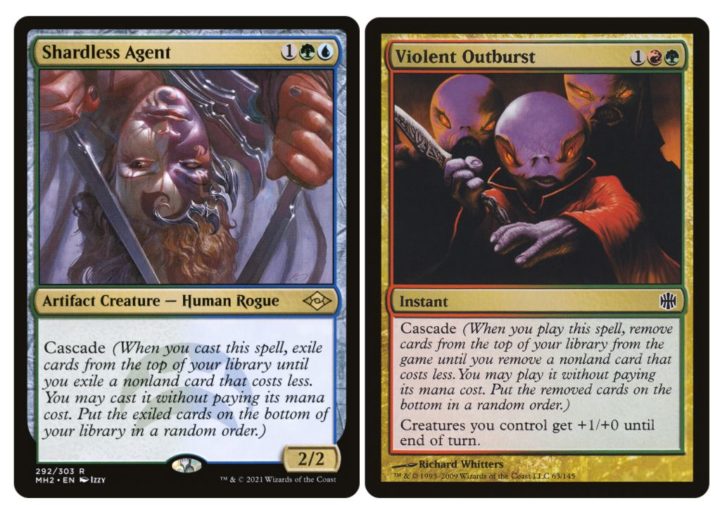
The small selection of legal cascade spells don’t exactly scream “Modern playable.” But when they all allow you to cast Living End for free, they look a lot better — particularly the instant-speed Violent Outburst! Players have used this plan to combo with all the different suspend spells at one time or another; but other than Hypergenesis (which was quickly banned in Modern), Living End has proven the most viable payoff.
This is why Living End decks can only play cards that cost three or more mana. It’s absolutely essential that your cascade spells turn into Living End every single time, even after sideboarding. Luckily, there are more than a few ways to use mana and interact on your early turns without violating this rule.
EVERY TRICK IN THE BOOK
Now that we know how to cast Living End, how do we get enough creatures into our graveyard to make it lethal? And how do we interact with our opponents in the meantime?
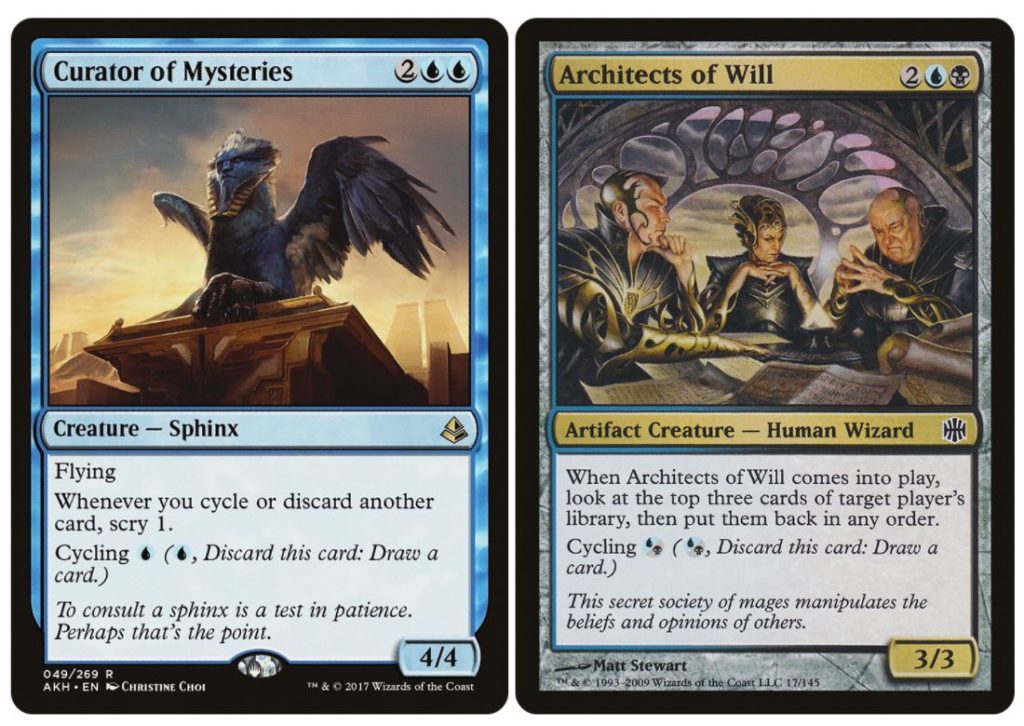
Aside from a printed mana value of three or more, Living End players are looking to get their card draw and interaction on creature spells wherever possible. The first way to achieve this is by using cheap cycling creatures, especially those with good-sized bodies for combat. The classic Street Wraith is the pinnacle here, but one-mana cyclers like Striped Riverwinder, Curator of Mysteries, and Architects of Will are good enough to make the cut. Similar self-discarding creatures like Waker of Waves or Faerie Macabre from the sideboard are welcome, particularly if they help dig toward much-needed cascade spells.
With their high printed mana values and solid interactive triggers, creatures with evoke have been essential to Living End decks since the early days. The fact that they also load themselves into your graveyard after use is essential when you’re trying to race to a meaningful Living End by turn three! In the past, these slots were occupied by the humble Ingot Chewer or Spitebellows; more recently, the Modern Horizons 2 “pitch Elementals” gave Living End even more of a boost.
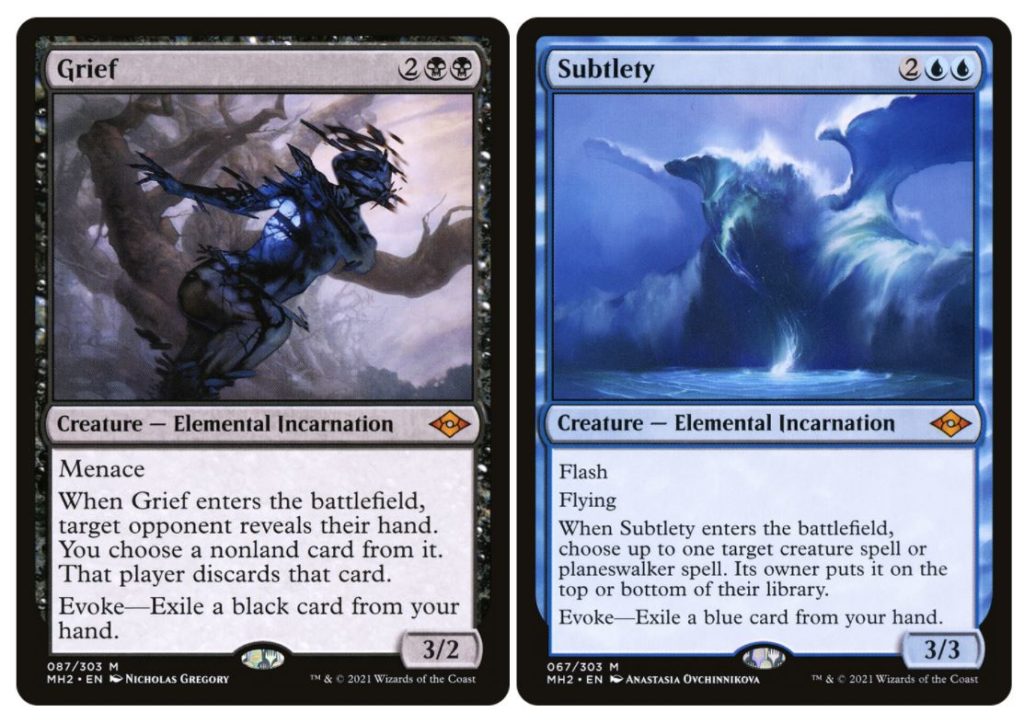
The addition of Grief and Subtlety massively improves the deck’s ability to fight control, letting you Thoughtseize or Unsubstantiate possible answers to the combo. Endurance often sees play in lesser numbers to empty an opponent’s graveyard right before you cast Living End. Despite having to exile an extra card from hand to cast them, the Elementals themselves still go to your graveyard, giving you even more value when you reanimate them. It’s an overwhelming amount of interaction from a deck which has historically had very little, and half the reason why the deck has moved away from red in favor of blue. The other reason, of course, is the non-creature pitch spell: Force of Negation.
Rounding out the blue slots for most builds is the adventure creature Brazen Borrower. Other adventure creatures like Bonecrusher Giant are also arguably viable, since they offer turn-two interaction. However, the difficulty of getting them into your graveyard makes them more of a backup option after you’re loaded up on cyclers and evoke creatures.
HOW TO BEAT IT?
Living through Living End is more complicated than it might look at first blush. The biggest mistake when assessing this match-up is to conflate its all-in approach to deck building with an all-in playstyle, and tunnel vision entirely on stopping the main combo. Even if you prevent your opponent from casting Living End, the deck still presents a decent midrange game plan with its Elementals and (eventually) hardcast threats. Living End can still serve as an instant, three-mana sweeper against aggro decks even when you cut them off from their graveyard.
The key is to bring in enough answers to shut down the explosive power of the namesake card without diluting your own game plan too much. In fact, now that Living End can bounce hate cards with Subtlety or Brazen Borrower, it might be better to err on the side of less sideboarding than more!
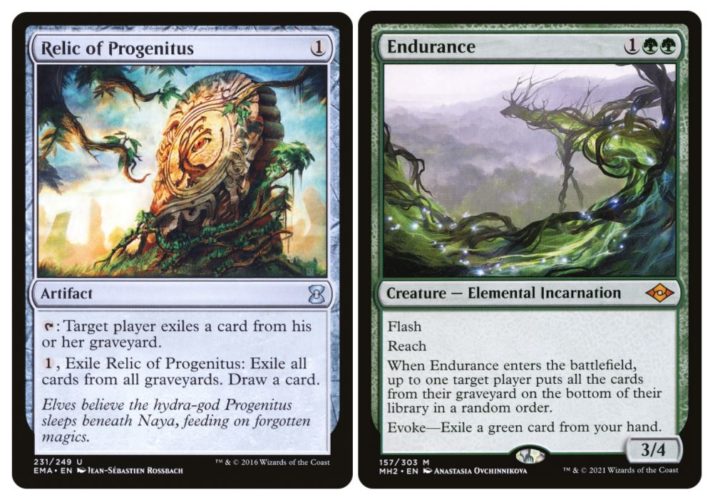
The most effective hate is the kind that considers their available interaction as well as the combo itself. For graveyard hate, Endurance, Relic of Progenitus and Faerie Macabre allow you to react to the combo in a way that beats Force of Negation. Rest in Peace’s ETB trigger also makes bounce spells much less useful.
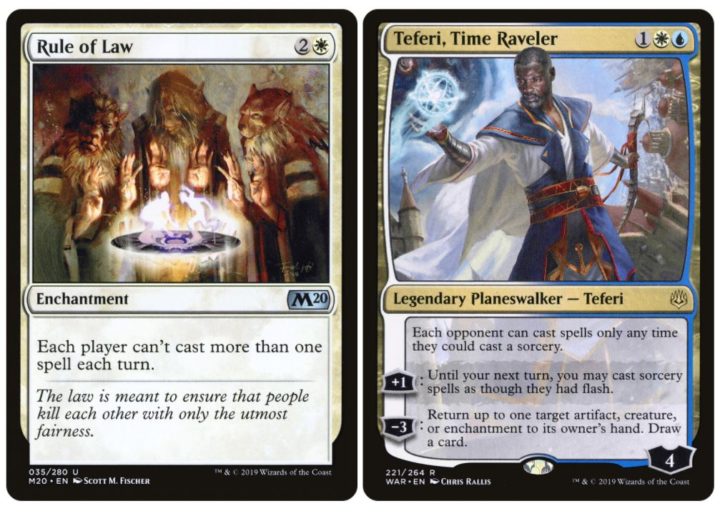
When it comes to stopping Living End itself, there are some narrow but powerful options to consider. Teferi, Time Raveler or Rule of Law break up the cascade plays because Living End will always be their second spell. (Ethersworn Canonist and Deafening Silence are unfortunately beaten if the Living End player uses Shardless Agent (an artifact creature) as their cascade opener.) Ranger-Captain of Eos and Nimble Obstructionist can be activated in response to the cascade trigger going on the stack and will reliably stall them that turn. Pre-MH2 builds of Living End could beat these cards by using As Foretold instead, but for now, that counterplay seems to have fallen out of the deck’s arsenal.

Chalice of the Void set to zero counters has the benefit of being free to cast, but is vulnerable to all their interaction, including Force of Vigor from the sideboard. A slower but more stubborn hate choice would be Trinisphere. It not only makes the Living End combo cost an extra three mana, but also forces them to pay the tax just for trying to get Trinisphere out of the way.

And of course, if you’re in white, you can reach for a few key hatebears to play around Force of Negation/Vigor while seriously messing up Living End. Drannith Magistrate or Sanctum Prelate set to zero will stop them cascading into Living End, but are still vulnerable to Subtlety.
A HARD COUNTER?
Blue players will notice I haven’t made much mention of countermagic as a response to Living End. The truth is that Living End plays such an unusual game of Magic that simply sitting on them as a control deck will often be a losing plan. Yes, countering the spell Living End will usually buy you several turns — but unless you also exile their yard, their constant cycling will quickly find one of their eight cascade spells to try again.
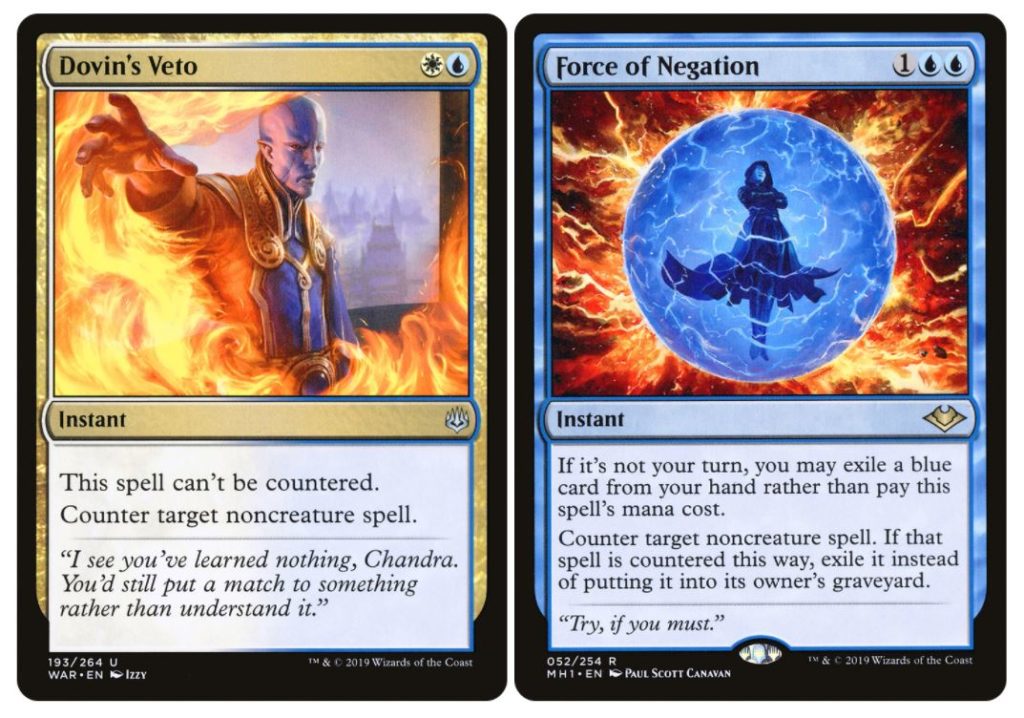
If your plan is to counter Living End, you’ll also have to avoid getting hit by discard from Grief, mana denial from Fulminator Mage or Fire//Ice, or even enemy countermagic from the sideboard. Subtlety provides counterplay to uncounterable options like Dovin’s Veto; between the blue Elemental and Force of Negation, they will usually have more free spells to throw on the stack than you do. Worst of all, when games hinge on free counterspells, they can turn your Force of Negation into Cancel by using Violent Outburst to start the combo during your end step!
Overall, it’s best not to rely on countermagic (or sweepers) alone as an answer to Living End, despite their seemingly predictable game plan. Like all the best combo decks, beating them requires an optimal mixture of targeted hate to slow them down, and a proactive game plan of your own — so lean into your Teferis and don’t get greedy.
DEATH IS ALWAYS EVOLVING
So that’s the Living End combo, at least as it’s known in Modern today. It’s a beautiful little paradox of an archetype: single-minded in its goal, yet cunning in how it gets there. Inflexibly bound by its rigid deck building requirements, yet able to constantly reinvent itself over the years to keep up with the Modern metagame.
From the oldest Jund builds trying to get under opponents with Simian Spirit Guide, to its days as a blue combo-control list with As Foretold, Ancestral Vision, Nimble Obstructionist and Ardent Plea, to the experimental hybrid lists firing Living End off Electrodominance and substituting the usual cyclers for Kiki-Jiki and Griselbrand combos — Living End is Magic’s proof that restrictions spark creativity. And after spending years in and out of Modern tier lists, the addition of so many pitch spells to the format has rocketed this decade-old archetype back to the peak of playability. With this new interaction, Living End has more flexibility in achieving its singular End than ever before!

Tom’s fate was sealed in 7th grade when his friend lent him a pile of commons to play Magic. He quickly picked up Boros and Orzhov decks in Ravnica block and has remained a staunch white magician ever since. A fan of all Constructed formats, he enjoys studying the history of the tournament meta. He specializes in midrange decks, especially Death & Taxes and Martyr Proc. One day, he swears he will win an MCQ with Evershrike. Ask him how at @AWanderingBard, or watch him stream Magic at twitch.tv/TheWanderingBard.

